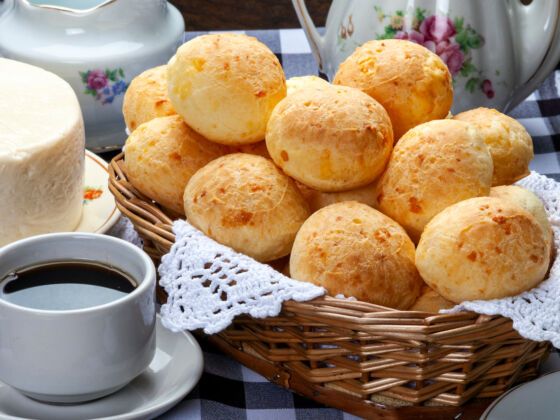The World Cup is going full blast! We Brazilians are proud to host fellow soccer fans from all over and delight them with our warm smiles, excellent music, and delicious food. Everyone at this point may be familiar with Brazilian treats like caipirinha and churrasco, but to truly understand Brazilian food glory you’ll need to familiarize yourself with at least one or two of the dishes listed below. Forget the hotel buffet and go track down these babies in the streets!


11 of the Best Brazilian Foods You've Probably Never Tasted
1. Torresmo
Not for the faint of heart, this classic side dish to accompany feijoada is nothing more than crispy fried pork rinds. It can be greasy, of course, but when properly done it’s a fantastic petisco (snack) to have with beer at a boteco (informal neighborhood bar) while watching a soccer match.
2. Pão de queijo
Little fluffy balls of manioc-flour bread with cheese. It’s said that the best come from Minas Gerais, but they’re famous in São Paulo and Rio too. They’re also gluten free?
3. Suco de cajú and its alcoholic bro, cajú amigo
Brazil is blessed with many delicious and nutritive fruits, and the bright yellow cajú (pronounced kah-juh) is among the local favorites. Its juice is bittersweet and amazingly tasty, and if you ever cross paths with the picolé (popsicle) version, get one. Cajú amigo is a batida (shaken cocktail) made with a local liquor like cachaça (sometimes vodka) with ice, sugar, and the crushed fruit.
4. Goiabada
Guava paste with sugar. Lots of sugar. It comes in cream or cascão (hard) versions and is usually served with white cheese in a traditional dessert called Romeu e Julieta. In fancy restaurants in Rio and São Paulo, you’ll often find North American cheesecake and French soufflé versions on the menu.
5. Açaí
In North America it’s a new “wonder berry,” but Brazilians have known about this little purple delicacy for ages. It’s a super favorite, consumed as an icy and creamy after-gym treat, sometimes with muesli, guarana syrup, and/or sliced fresh banana. Believe me, it’s more of a refreshing substitute for a big meal than a snack.
6. Baião-de-dois
A tasty dish from the northern and northeastern states, widely available in big southeastern cities as well. Baião-de-dois consists of rice and green beans (de corda variety) with queijo de coalho (salty white cheese) and carne-de-sol (local jerked beef). It’s common to add vegetables such as jerimum (pumpkin) and macaxeira (manioc) and to pour liquid butter and hot sauce all over it. Finish with a small dose of cachaça and be happy.
More like this
7. Tacacá
A traditional hot soup made of tucupi (manioc sauce), tapioca (manioc flour), and dried shrimp, plus a leafy green known as jambu, which has a numbing or tingling effect on the mouth. The dish is served in bowls and is very easy to find in Amazon cities, northern restaurants, and food stands all over the country. It’s also the best hangover cure in the world (I know it well).
8. Tucunaré and pirarucu
It’s not surprising that the Amazon, being the largest river system on the planet, has plenty of delicious fish to offer. These two giants (pirarucu can weigh 200kg!) are every fisher’s favorites and are easy to find while traveling in the north. They’re firm, white, meaty, succulent, and can be filleted, stuffed, or baked whole.
9. Cuscuz Paulista
Mixing two of the most popular Brazilian ingredients (corn and manioc flour), cuscuz comes in many variations, the Paulista being the most famous. It’s basically a salty cake-like recipe made with flour and filled with ingredients that can vary from canned sardines (yes!) to palm hearts, boiled eggs, tomatoes, and olives (often all together). Every family has its favorite recipe. I love it.
10. Coxinha
Deep-fried dough filled with chopped chicken breast. It’s available everywhere and best enjoyed with a can of the Brazilian soda Guaraná. Please note that the word coxinha is also slang for something or someone uninteresting, bland, and tasteless — quite contrary to the snack.
11. Caranguejo
Unmissable if you’re in the northern coastal cities of Fortaleza and Natal, it’s nothing more than crab (usually the goiamum variety) cooked inside the shell. Just break the body and claws with a small hammer or nutcracker to get at the white, delicate, delicious meat. It takes some work, not to mention practice, but don’t be shy — you’re allowed to make a mess. For those who feel lazy, ensopados (stews), casquinhas (meat baked on half shells) and patinhas (deep-fried claws without the shell) are always available.